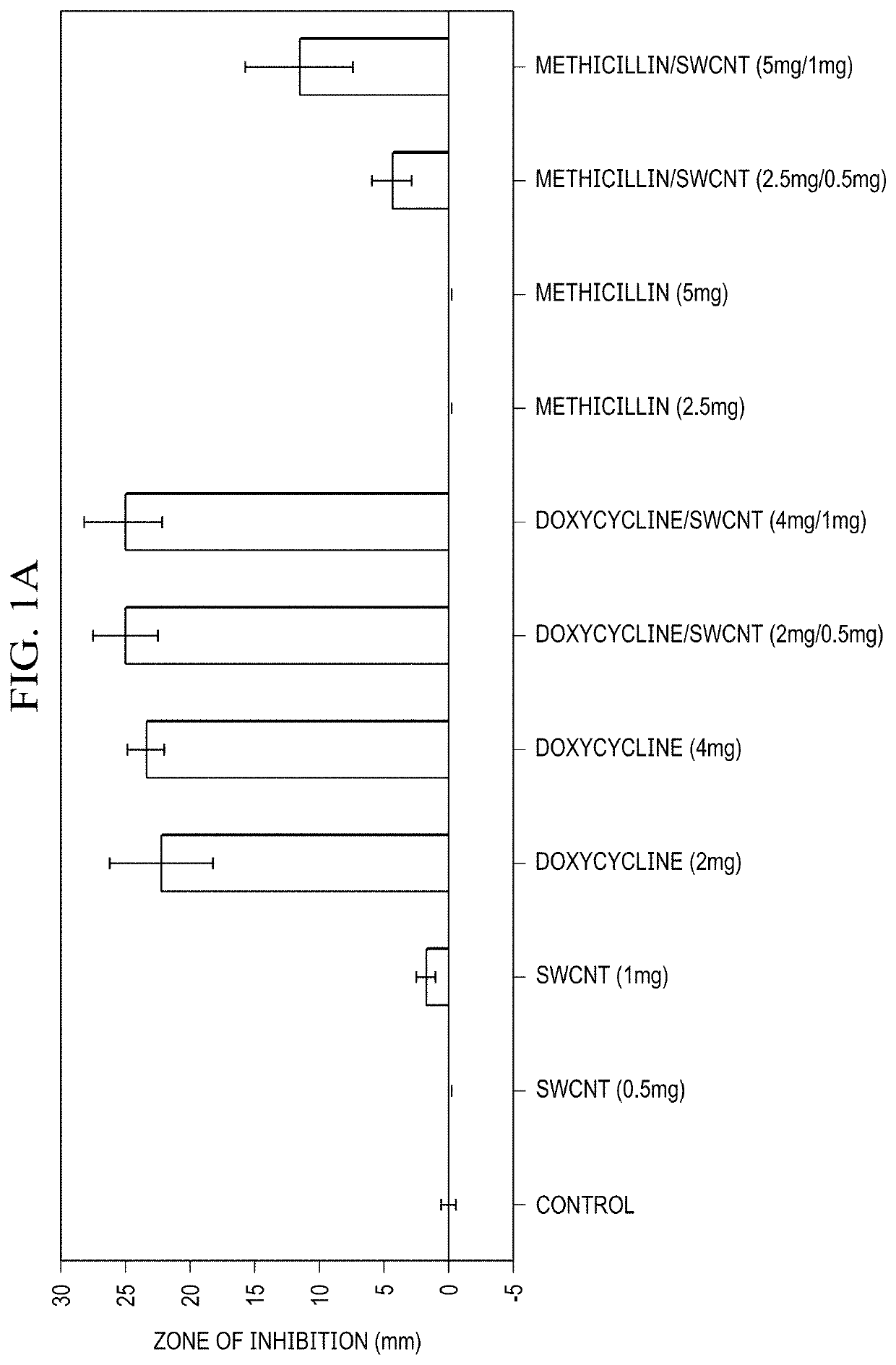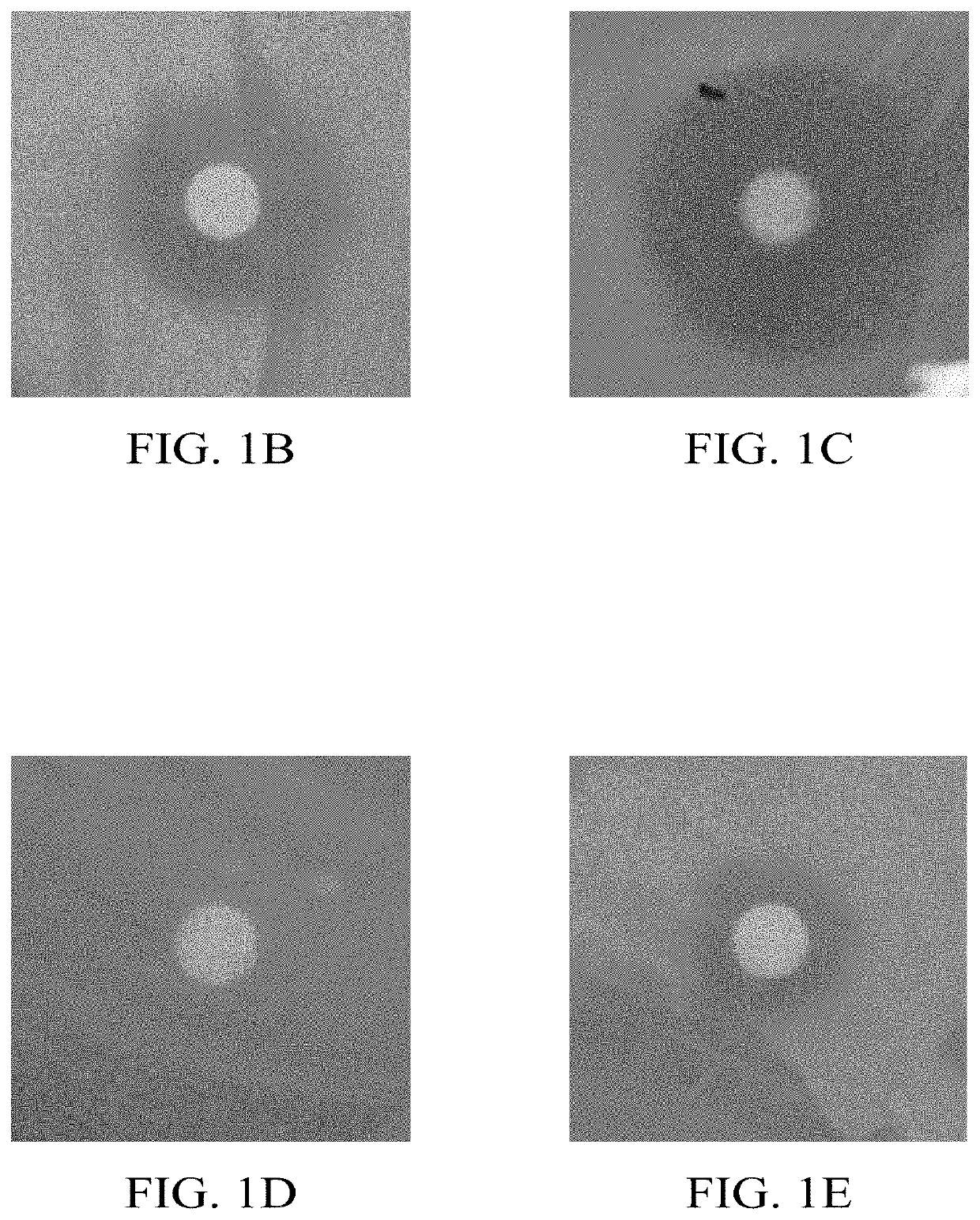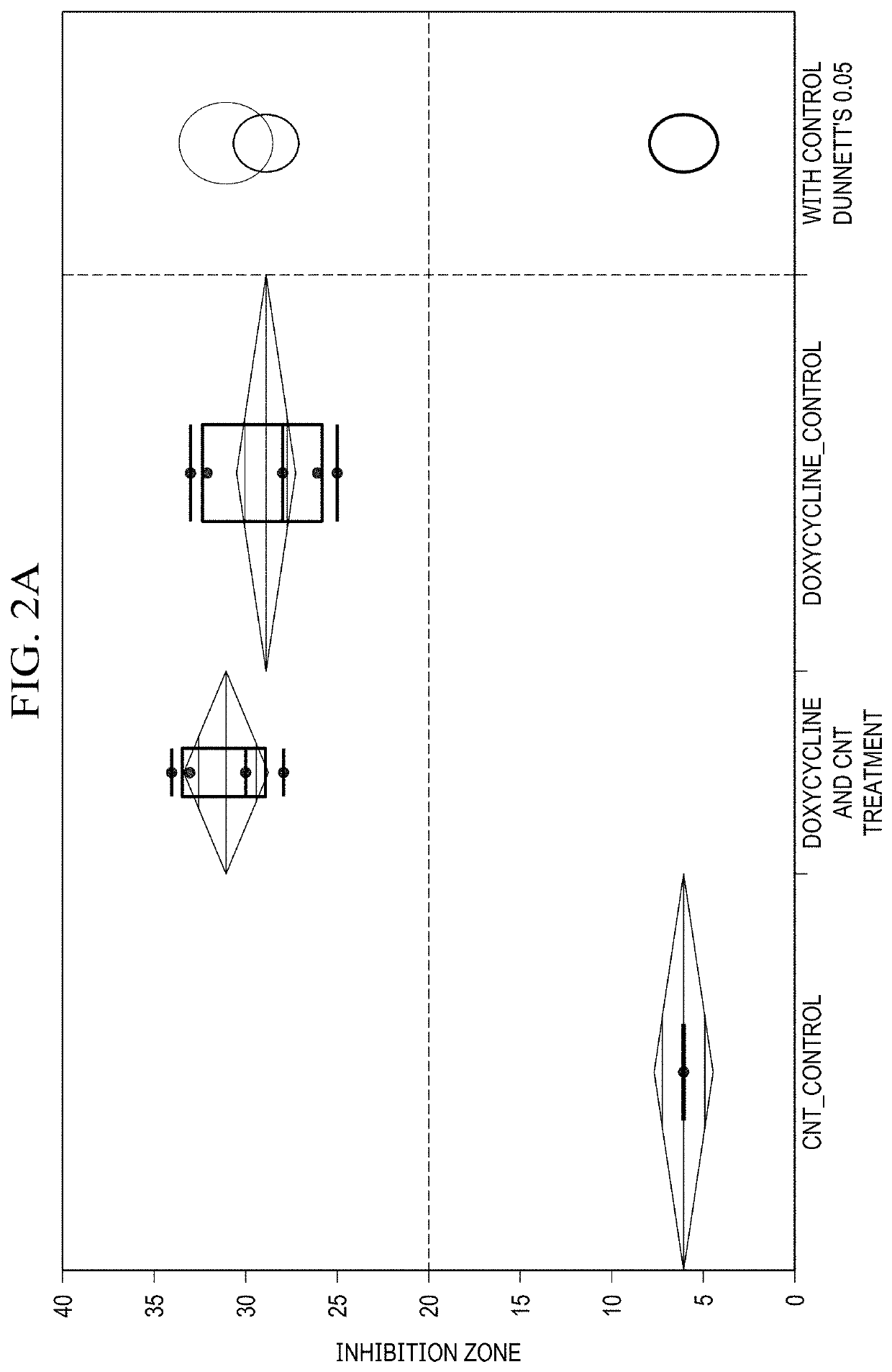Single-Walled Carbon Nanotube-Assisted Antibiotic Delivery and Imaging Techniques
a carbon nanotube and single-walled technology, applied in the field of single-walled carbon nanotubes, can solve the problems of antibiotic-resistant bacterial infections becoming the leading cause of death, the treatment efficacy of common infections is insignificant, and the number of antibiotic-resistant infections is increasing. achieve the effects of facilitating delivery and uptake, enhancing antibacterial activity, and increasing antibacterial activity
- Summary
- Abstract
- Description
- Claims
- Application Information
AI Technical Summary
Benefits of technology
Problems solved by technology
Method used
Image
Examples
Embodiment Construction
[0036]As discussed in the Background of the invention, due to the misuse and overuse of conventional antibiotics, resistant infections are on the rise. Those include well-known bacterial strains such as Staphylococcus aureus (MRSA) infection, Streptococcus pneumoniae, and Mycobacterium tuberculosis. It is predicted that approximately 10 million people will die from resistant infections by the year 2050 alone, not considering the emergence of new mutated strains. This mortality prediction exceeds that of cancer and diabetes combined. In response to such a daunting crisis, the scientific community has been developing new antibiotics. However that approach is hardly sustainable and not long lived, rather, giving rise to multi-drug resistant infections such as MRSA and VRCE. With mutated bacterial infections being the foundation for many large-scale health issues including M. tuberculosis, MRSA and VRE, the crisis of antibiotic resistance becomes a global threat.
[0037]To date very few r...
PUM
| Property | Measurement | Unit |
|---|---|---|
| Electrical resistance | aaaaa | aaaaa |
| Hydrophobicity | aaaaa | aaaaa |
| Antimicrobial properties | aaaaa | aaaaa |
Abstract
Description
Claims
Application Information
 Login to View More
Login to View More - R&D
- Intellectual Property
- Life Sciences
- Materials
- Tech Scout
- Unparalleled Data Quality
- Higher Quality Content
- 60% Fewer Hallucinations
Browse by: Latest US Patents, China's latest patents, Technical Efficacy Thesaurus, Application Domain, Technology Topic, Popular Technical Reports.
© 2025 PatSnap. All rights reserved.Legal|Privacy policy|Modern Slavery Act Transparency Statement|Sitemap|About US| Contact US: help@patsnap.com



